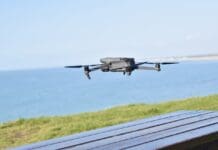
This post is also available in:
 עברית (Hebrew)
עברית (Hebrew)
Standard antennas for communication purposes are crucial for soldiers during operations. However, the traditional ‘whip’ antennas can be easily intercepted which makes soldiers in charge of communication stand out as targets, and significantly limits mobility.
In order to provide a solution for this challenge, a new system was developed by the Defence Science and Technology Laboratory (DSTL) of the US Army, which is meant to overcome these limitations by packing advanced technology into the area around the body. The new body-worn antennas are meant to change how soldiers operate on the battlefield, improving safety and efficiency of manoeuvre.
The operational challenges presented by the existing equipment consists in that standard antennas are low gain, highly visible, and can limit manoeuvrability in operational environments, according to forces.net.
DSTL’s new equipment aims to make those obstacles a thing of the past.
Its new design is a way of replacing a traditional stick or whip antenna for a dismounted soldier or for someone else in the commercial or civilian arena, such as search and rescue where improved mobility has major benefits.
Unlike an antenna that rises up as a flexible wire or rod, these systems are tucked away.
“One of the main benefits of it is that you no longer have that visual signature – you can’t see the person that is wearing the antenna, there’s no big stick above their heads, and therefore you’re not going to pick them out above the crowd.”, according to DSTL officials.
“The aerials themselves, some of them quite small, some of them get a little bit larger, all sit within the body area.
“The whole man-pack they might be wearing will be lighter. Anything that can reduce the weight is going to be a massive bonus and anything that reduces visual signature – so people are safer, and anything that is not going to break so often – is clearly an advantage to people wearing any type of kit, whether it’s military or non-military.
“The battery requirements for a device like this are lower because it performs better than a standard aerial, so that is a really big benefit for them, not having to carry so much around.
“They’ll also notice that it won’t snag so easily. It’s more rugged and won’t damage so easily in the field, so there’s quite a few benefits for the actual soldier.”























